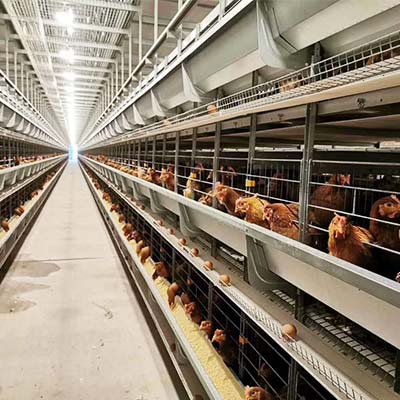Efficiency and Sustainability Automated Poultry Farming Equipment
- font size decrease font size increase font size
In the ever-evolving landscape of modern agriculture, poultry farming has emerged as a pivotal sector, driven by the increasing global demand for protein-rich foods. With the relentless march of population growth and urbanization, the consumption of chicken, a staple high-protein, low-fat meat, has soared. This surge in demand has necessitated a transformation in farming practices, pushing the industry towards increased efficiency, sustainability, and food safety. Automated poultry farming equipment stands at the forefront of this revolution, empowering chicken farmers worldwide to enhance productivity, reduce costs, and ensure the well-being of their flocks.
The Necessity for Automation
Traditional poultry farming methods, while still practiced in many parts of the world, often struggle to keep pace with the escalating demands of modern consumers. Manual feeding, watering, and monitoring of chickens are labor-intensive, prone to errors, and limit the scalability of operations. Moreover, manual practices can be challenging to maintain under stringent hygiene and biosecurity protocols, increasing the risk of disease outbreaks and compromising food safety.
Automated poultry farming equipment addresses these challenges head-on, offering a comprehensive solution that streamlines production processes, minimizes human intervention, and enhances overall farm management. By automating routine tasks such as feeding, watering, and environmental control, farmers can focus on strategic decision-making and proactive problem-solving, ultimately leading to improved animal health, productivity, and profitability.

Key Components of Automated Poultry Farming Equipment
1. Automatic Feeders
Automatic feeders represent a cornerstone of modern poultry farming. These systems dispense precise amounts of feed to chickens according to their age, breed, and growth requirements, eliminating the need for manual feeding and reducing feed waste. Advanced automatic feeders incorporate sensors that monitor feed levels and automatically replenish them when necessary, ensuring a continuous supply of fresh feed.
The benefits of automatic feeders are numerous. Firstly, they help maintain uniform feeding patterns, promoting healthier and more uniform growth rates among chickens. Secondly, by minimizing human handling of feed, the risk of contamination is reduced, enhancing food safety. Lastly, automatic feeders optimize feed consumption, leading to cost savings and increased profitability for farmers.
2. Nipple Drinkers
Water is vital for chicken health and productivity, and nipple drinkers provide an efficient and hygienic solution for poultry drinking needs. These systems consist of individual nipples or cups attached to a central water supply, allowing chickens to drink at their leisure. Nipple drinkers eliminate the need for open water troughs, which can harbor bacteria and promote the spread of diseases.
The precision control offered by nipple drinkers ensures that chickens receive the right amount of water, reducing water waste and maintaining optimal hydration levels. Furthermore, these systems are easy to clean and maintain, contributing to a cleaner and healthier farm environment.
3. Environmental Control Systems
Maintaining optimal environmental conditions is crucial for chicken health and growth. Automated environmental control systems monitor and adjust factors such as temperature, humidity, ventilation, and lighting to create a comfortable and stress-free environment for chickens. These systems use sensors to collect data and algorithms to analyze it, making adjustments as needed to ensure ideal conditions.
For example, during hot weather, the system can automatically activate fans and misters to cool the air and prevent heat stress. Similarly, during cold weather, heaters can be activated to maintain a comfortable temperature. Proper ventilation ensures adequate air circulation, reducing the risk of respiratory diseases, while optimal lighting conditions support growth and egg production.
4. Monitoring and Tracking Systems
In today's interconnected world, data is king. Automated monitoring and tracking systems collect and analyze real-time data on chicken health, behavior, and production metrics, providing farmers with actionable insights. These systems utilize cameras, sensors, and other IoT devices to gather data, which is then processed and presented in user-friendly dashboards.
Farmers can use this data to identify potential issues early on, take corrective actions, and optimize their farming strategies. For instance, monitoring systems can detect changes in chicken behavior, indicating illness or stress, enabling farmers to intervene promptly. Additionally, tracking systems can help farmers understand production patterns, enabling them to make informed decisions about feed rations, breeding programs, and marketing strategies.

